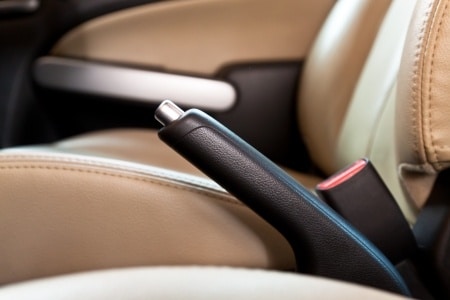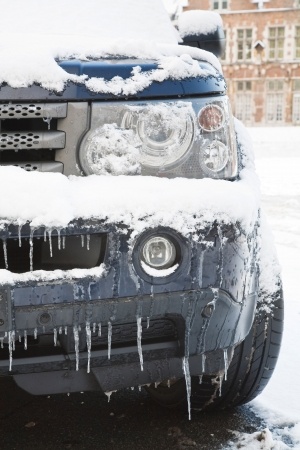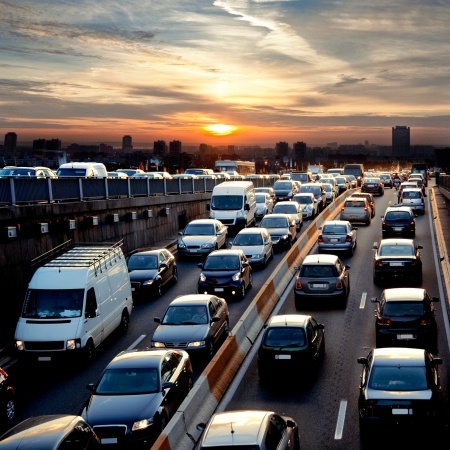Car Safety: Tips on Driving Through Work Zones
 Millions of cars are driven every day and most of the people driving those cars are in a hurry. It’s no wonder why there are thousands of car accidents every year, even in slow-speed zones like work zones. In fact, over five hundred people die in work zones every year and about four people are injured every hour. While waiting in traffic can be frustrating, drivers should always be patient and pay attention to their surroundings, other drivers, and construction workers (like flaggers).
Before Leaving the House
Most accidents in work zones happen during the daytime, usually when people are going to and coming from work. Becoming aware of construction work in the area will help in preparing for the commute. People should either leave a bit earlier than usual and sit through the construction or research an alternate route to their destination. However, unexpected things happen sometimes, and when driving, these things require adequate attention.
Before the Work Zone
Construction work is sometimes unexpected, but as drivers approach the area, they will see many signs designating the area ahead as a work zone. A work zone is distinguished by signs, cones, barrels, heavy construction equipment, and, most often, construction workers with bright vests. Drivers should be well acquainted with these signs and their purposes.
Listed below are some tips for preparing to come into a work zone:
Millions of cars are driven every day and most of the people driving those cars are in a hurry. It’s no wonder why there are thousands of car accidents every year, even in slow-speed zones like work zones. In fact, over five hundred people die in work zones every year and about four people are injured every hour. While waiting in traffic can be frustrating, drivers should always be patient and pay attention to their surroundings, other drivers, and construction workers (like flaggers).
Before Leaving the House
Most accidents in work zones happen during the daytime, usually when people are going to and coming from work. Becoming aware of construction work in the area will help in preparing for the commute. People should either leave a bit earlier than usual and sit through the construction or research an alternate route to their destination. However, unexpected things happen sometimes, and when driving, these things require adequate attention.
Before the Work Zone
Construction work is sometimes unexpected, but as drivers approach the area, they will see many signs designating the area ahead as a work zone. A work zone is distinguished by signs, cones, barrels, heavy construction equipment, and, most often, construction workers with bright vests. Drivers should be well acquainted with these signs and their purposes.
Listed below are some tips for preparing to come into a work zone:
- Pay Attention to Warning Signs. Diamond-shaped orange signs are in place hundreds of feet before a work zone to inform drivers of the upcoming road work. These signs could also indicate that there is a flagger directing traffic. A flagger has the same authority as the signs, only the sign can’t directly cite someone for disobeying. Flashing arrows and signs indicating closed lanes may indicate that drivers need to merge lanes as soon (and as safely) as possible.
- Don’t Speed. Sometimes the work zone is closer than drivers realize, so motorists should begin braking shortly after seeing the construction signs and follow the posted speed limits. Fines are doubled for those driving over the speed limit in work zones.
While in the Work Zone
While some accidents may occur before the work zone, many more happen in the construction area. These zones can be full of bumps and holes and are very dangerous to the driver and to the people working in the construction zone.
Listed below are some tips on how to stay safe while driving through a work zone:
- Minimize distractions. Although traffic can move slowly in construction zones, a distraction like a text conversation could lead to a minor mistake with major consequences.
- Flow with traffic. While speeding hinders work zone safety, so do slow drivers. Motorists should aim to keep up with traffic (this means paying attention to the warning signs and other drivers).
- Remain a safe distance from obstacles. Drivers should be attentive to (and avoid coming into contact with) construction workers and the equipment in work zones. This can include heavy construction equipment or something as small as orange construction cones. Drivers are responsible for damages made to their vehicles if they hit construction equipment. (Just in case, drivers should make sure their insurance policies satisfy their auto repair needs.)
- Stay on the road. In addition to receiving a fine, driving on the shoulder or through the median can be dangerous.
Conclusions
Drivers should be prepared and ready for the unexpected when driving through work zones. The most important rules for staying safe in construction areas are to be attentive and remain calm. No one wants to sit through a half hour of construction, but it is sometimes necessary to improve the roads we all share.
 Millions of cars are driven every day and most of the people driving those cars are in a hurry. It’s no wonder why there are thousands of car accidents every year, even in slow-speed zones like work zones. In fact, over five hundred people die in work zones every year and about four people are injured every hour. While waiting in traffic can be frustrating, drivers should always be patient and pay attention to their surroundings, other drivers, and construction workers (like flaggers).
Before Leaving the House
Most accidents in work zones happen during the daytime, usually when people are going to and coming from work. Becoming aware of construction work in the area will help in preparing for the commute. People should either leave a bit earlier than usual and sit through the construction or research an alternate route to their destination. However, unexpected things happen sometimes, and when driving, these things require adequate attention.
Before the Work Zone
Construction work is sometimes unexpected, but as drivers approach the area, they will see many signs designating the area ahead as a work zone. A work zone is distinguished by signs, cones, barrels, heavy construction equipment, and, most often, construction workers with bright vests. Drivers should be well acquainted with these signs and their purposes.
Listed below are some tips for preparing to come into a work zone:
Millions of cars are driven every day and most of the people driving those cars are in a hurry. It’s no wonder why there are thousands of car accidents every year, even in slow-speed zones like work zones. In fact, over five hundred people die in work zones every year and about four people are injured every hour. While waiting in traffic can be frustrating, drivers should always be patient and pay attention to their surroundings, other drivers, and construction workers (like flaggers).
Before Leaving the House
Most accidents in work zones happen during the daytime, usually when people are going to and coming from work. Becoming aware of construction work in the area will help in preparing for the commute. People should either leave a bit earlier than usual and sit through the construction or research an alternate route to their destination. However, unexpected things happen sometimes, and when driving, these things require adequate attention.
Before the Work Zone
Construction work is sometimes unexpected, but as drivers approach the area, they will see many signs designating the area ahead as a work zone. A work zone is distinguished by signs, cones, barrels, heavy construction equipment, and, most often, construction workers with bright vests. Drivers should be well acquainted with these signs and their purposes.
Listed below are some tips for preparing to come into a work zone:


